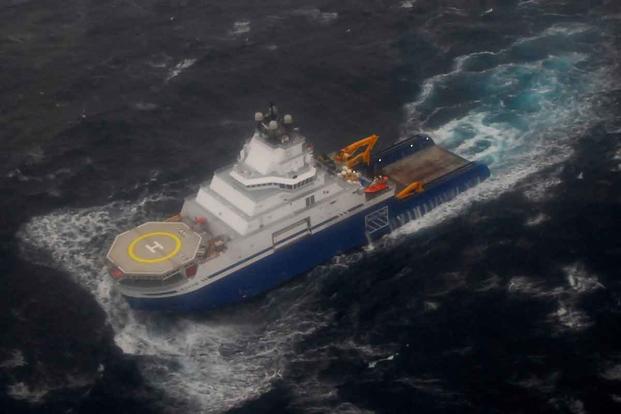The House Appropriations Committee on Wednesday approved an increase to the Coast Guard's fiscal 2024 budget, forwarding a bill to the full chamber that funds a 5.2% pay raise for members, a commercial icebreaker, four additional fast response cutters, and an extra HC-130J Super Hercules aircraft.
The committee markup of the proposed fiscal 2024 Homeland Security budget, which allocates $91 billion in discretionary funds for the department, includes $13.65 billion for the U.S. Coast Guard -- $40 million less than it received this year but higher than the White House request of $13.21 billion.
The extra money would go to purchase the four additional ships, which are meant to boost the Coast Guard's operations in the Indo-Pacific region, along with one aircraft; and bolster funding for a new multipurpose training facility at Coast Guard Training Center Cape May, New Jersey, and maritime credentialing, among other programs.
Read Next: House Panel Approves Defense Bill with Highest Pay Raise in Decades After Culture War Brawl
The proposal also contains $150 million to purchase and modify a commercial icebreaker that would allow the Coast Guard to increase its presence in the Arctic while it waits for the first polar security cutter to be built. The ship, which has experienced numerous delays in its design phase, is now not expected to be delivered until at least 2026 or 2027.
"The committee feels strongly that the nation needs additional surface presence in the Arctic to protect economic and national security interests in the high latitudes, particularly given the ongoing delays with the [polar security cutter] acquisition program," committee members wrote in the report accompanying the bill.
The polar security cutter program eventually will yield three heavy icebreakers, which typically can break ice of up to 20 feet thick, and at a minimum, six feet of ice continuously at a speed of three knots.
The first vessel in the class was anticipated to be delivered in 2024, but its design has proven to be more of a challenge than expected. In addition, the shipyard originally contracted to build it, VT Halter Marine Inc., was sold to Bollinger Shipyards last November, further complicating the $745 million procurement.
In response, the committee has proposed cutting the program by $25.8 million "to align with the shipyard production delays."
The Coast Guard has considered purchasing the multipurpose offshore vessel Aiviq, a tug supply vessel with icebreaking capabilities that is owned by Edison Chouest Offshore. Funds were approved in the service's fiscal 2022 authorization bill but were stripped at the last minute.
The legislation also funds the analysis and selection for a builder of a new icebreaker for the Great Lakes, which the committee said is vital to the region's economy. Committee members expressed a desire for the vessel to be more technologically advanced than the current large icebreaker that plies the Great Lakes, the cutter Mackinaw, and be more maneuverable, capable of exiting the lakes.
Meanwhile, the committee also approved nearly $5.4 billion to support personnel and benefits, including the anticipated 5.2% pay raise that service members are expected to receive next year, but the figure is $11 million below the service's request, to account for an anticipated shortfall in recruiting.
The Coast Guard has missed its recruiting goals by more than 20% for the past three years and has an enlisted shortfall of roughly 2,000 members.
Other items in the funding bill include:
- $579 million for the Offshore Patrol Cutter, used for counternarcotics and migrant interdictions, particularly in the Caribbean and Eastern Pacific.
- $10 million for a technology modernization program to enhance the service's autonomous surface and air asset capabilities, as well as artificial intelligence and data analytics.
- $98 million for the Waterways Commerce Cutter program to begin recapitalizing the Coast Guard's fleet of inland tenders and barges.
The bill does not support management of a program to replace the 52-foot vessels the Coast Guard uses in the Pacific Northwest on the treacherous Columbia River and elsewhere along the coasts of Oregon and Washington. The committee has asked for a report on the risks presented in the region before considering funding.
"The committee has safety concerns with a replacement for the 52-foot [special purpose craft, heavy weather] being used to tow large vessels over the hazardous river bars along the Washington and Oregon coast," members wrote.
The bill now heads to the House floor for a vote. The Senate Appropriations Committee must complete its version of the bill before the two are reconciled and the final version receives a vote.
-- Patricia Kime can be reached at Patricia.Kime@Military.com.
Related: US Coast Guard Says Debris Field Has Been Found near the Titanic During Search for Submersible












